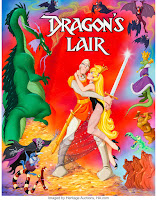I've been working on refining spell descriptions (again) lately -- for hopefully upcoming expanded releases of the OED Book of Spells and Book of War rules. (E.g., we started testing top-level spells in mass battle play in the BOW livestream sessions the other week.) A couple of recent testbeds brought to mind the question: what's better for expressing the area of a circular spell effect, the radius, or the diameter?
For many years I've been strongly biased towards using the radius, because that's the used in mathematical definition of a circle. Arguably, however, it's easier and more common to measure real-world existing circles via the diameter (given the center is not actually part of the circle or necessarily distinguished; think tires, pizzas, wells, etc.)
Funny observation: Gygax's writing for O/AD&D was amazingly inconsistent on the matter, often flip-flopping for various spells in opposite directions. Starting with the first few spells in the Chainmail list, I see:
- Chainmail: Catapults/fireballs given by diameter, light by radius, protection from evil by diameter, etc.
- Original D&D: Fireballs by radius, light by diameter, protection from evil by radius (so, each of example toggles)
- Swords & Spells: Everything by diameter.
- Advanced D&D: Everything by radius (as far as I can tell).
I think the Swords & Spells case is interesting, because it gives a big list with all the stats (range, area, duration) for every spell in OD&D in a master list. When I did the same thing for my simulator, I found that things got confusing for a specific reason -- every other shape was being expressed by overall width (squares, lines, cubes, rectangles, etc.), but circles were listed by half-width. So I was getting a bit scrambled comparing entries of "circle-2-in." next to "square-3-in." and remembering that the former is actually bigger (wider). Note this is the case where Gygax gave diameters for everything, and I think this explains why.
The other (and related) case is trying to build templates for area spells in a VTT, specifically Roll20. There's a single pipeline for importing a token image and specifying how big it should be in map-square-units, and that interface asks for the total width (whether the image is of a square, rectangle, circle, etc.). So for my circle areas I was having to do an extra mental step and remember to double the indicated rule dimension for each token. In addition, I'd note that hand-drawing circles, ellipses, etc. in Roll20 and most drawing software I'm familiar with involves drawing and reporting on the bounding box for the shape in question; they don't draw from center to circumference.
Based on these experiences, for consistency with other shapes, I had an urge to switch all the circular specifications from radius over to diameter. But I also thought to ask opinions online, and got feedback like this on the ODD74 forums:
Similarly, folks on Twitter were almost unanimously in favor of using the radius. Voting on the Wandering DMs Discord server also went for the radius (with some votes switching from diameter back to radius based on discussion there: esp., targeting and determining casualties for a blasting spell). I didn't bother to ask on an AD&D forum, since those rules do uniformly use radius, so I assume everyone will be habituated to that.
Therefore, I'm taking that as an overwhelming preference among the classic D&D community, and not indulge my momentary instinct to switch things to a Swords & Spells type presentation, but instead keep giving radius like everyone expects.
We're all lucky I didn't find some way to argue for the circumference.









